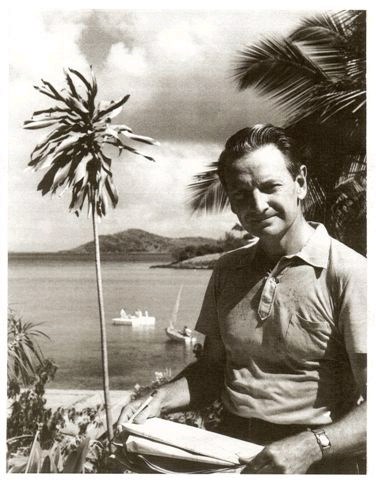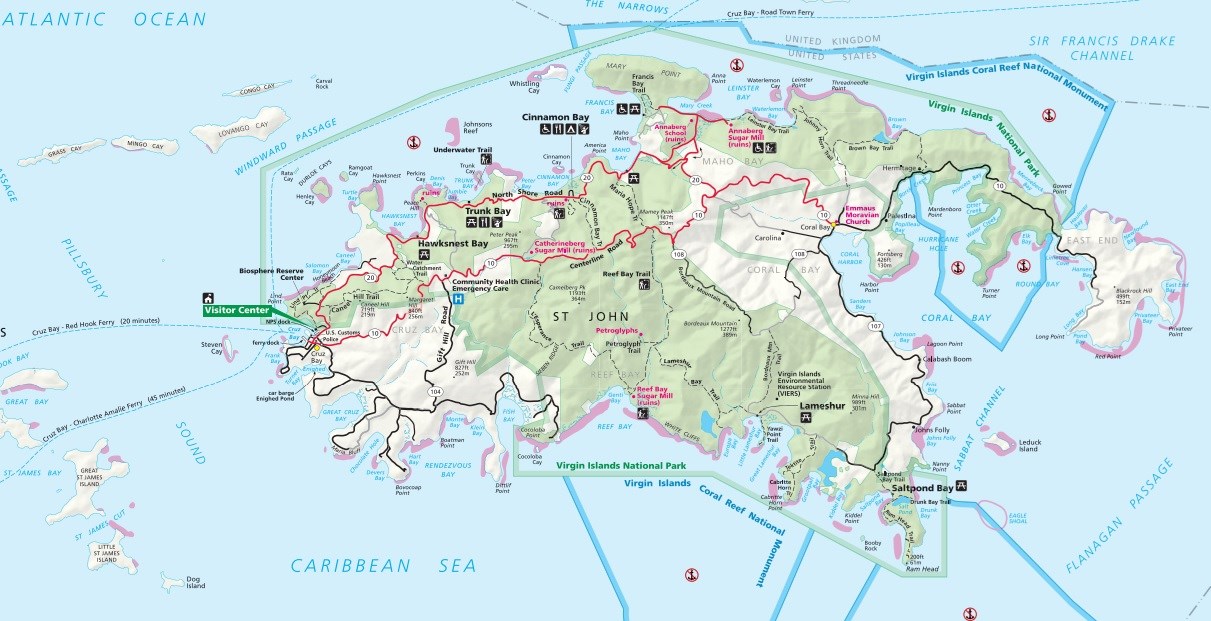
In 1952 while cruising the Caribbean, philanthropist Laurance Rockefeller pulled his boat up along the coast of St. John. At that time St. John, which is the smallest of the three main United States Virgin Islands, had no proper roads, no cars, no electricity, and no dock. Yet Mr. Rockefeller thought it was one of the most beautiful places he had ever seen. Inspired by this and after reading a 1939 report on the possibility of turning St. John into a national park he also came to the conclusion that the island should be preserved for future generations to enjoy. Over the next four years, Mr. Rockefeller and the Jackson Hole Preserve, a non-profit conservation organization, purchased approximately 5,000 acres of the 12,500 acre island. Their deeds were then turned over to the federal government for the creation of the nation’s 29th national park. The actual legislation establishing the park was passed by Congress on August 2, 1956 and the Virgin Islands National Park opened to the public later that year on December 1st. In 1962 the boundary of the park was expanded to include 5,650 acres of offshore water. Since then, the actually size of the park’s land has grown to 7,259 acres, which accounts for 56.7% of the island. 
No. In 1978 the park’s boundary was expanded to include 122.5 acres of land located on Hassel Island. Hassel Island is located in St. Thomas Harbor and has a rich history which includes military, commercial and agricultural activities. The dates for these activities span from the 1600s to the mid 1900s. What is the Virgin Islands Coral Reef National Monument? In the last days of his administration on January 17, 2001, President Clinton used his power to establish the Virgin Islands Coral Reef National Monument. This action furthered the protection to the marine features located in and adjacent o Virgin Islands National Park. Included in the monument’s 12, 708 acres of submerged land are mangrove habitats, algal plains and coral reefs. Endangered species that benefit from the protection of the monument include humpback whales, dolphins, sea turtles and brown pelicans. You will find the monuments boundaries on the park’s brochure. What is a Biosphere Reserve? Currently there are 440 Biosphere Reserves in 97 countries designated by UNESCO. The places with this status are usually unspoiled ecological areas that serve as examples for the value of conservation. Often biospheres provide ideal habitats for research and monitoring. The Virgin Islands National Park was designated a Biosphere Reserve in 1976. How many people visit the Virgin Islands National Park? Approximately 600,000 people visit the park each year. What threats is Virgin Islands National Park facing? Virgin Islands National Park has been listed by the National Parks Conservation Association as one of the ten most endangered parks. The factors which lead to the park making the list include high potential for land development in the park, dangers posed to the marine resources by poorly controlled fishing, and years of insufficient funding. There are 256 historic structures, mostly from the Danish plantation era, that are not being stabilized because of the lack of funding. Other concerns causing challenges for the park are coral diseases, exotic animals, inappropriate anchoring by boaters and exceeding the carrying capacity (how many people the area can support without causing environmental degradation). As of March 2010 the park had to deal with the threat of the invasive Indo-Pacific Lionfish. The fish can wreak havoc on the local fisheries in the park. It is avoided by Atlantic predators and has a voracious appetite for our native fishes. Sea turtle conservation is an additional ongoing challenge for the park. In the nearby British Virgin Islands, it is legal to hunt sea turtles, including the endangered species that have a home in Virgin Islands National Park. This close threat to sea turtle populations hampers the park’s efforts to encourage growth. |
Last updated: November 25, 2024
